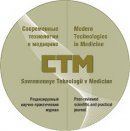
The Use of Cardiorhythmography in the Formation of Arterial Hypertension Risk Groups in Adolescents
The aim of the investigation was to assess the availability of cardiorhythmography to distinguish arterial hypertension risk group among adolescents.
Materials and Methods. We examined 52 adolescents with degree I arterial hypertension. The children underwent clinical, laboratory and instrumental examinations. The control group included 20 children comparable with the main group in gender and age, with no previous history of arterial hypertension. We assessed initial vegetative tonus and vegetative reaction by cardiorhythmography in all patients.
Results. According to cardiorhythmography findings, the adolescents suffering from arterial hypertension were found to have vegetative tonus changes statistically significantly more frequently compared to healthy children. The changes of vegetative tonus occurred in the form of the increased effect of sympathetic autonomic nervous system and the presence of unfavorable responses on load (hypersympathicotonic and asympathicotonic) due to the changes of regulatory systems functioning in the process of the body adaptive response formation in arterial hypertension.
Conclusion. Cardiorhythmography effectively reveals the body adaptive resource defects on loading and can be used to distinguish arterial hypertension risk groups.
- Kovalev I.A., Plotnikova I.V., Bezlyak V.V. Sovremennye aspekty profilaktiki faktorov riska razvitiya serdechno-sosudistykh zabolevaniy u detey i podrostkov s primeneniem informatsionnykh tekhnologiy [Contemporary aspects of prevention of cardiovascular risk factors in children and adolescents using information technology]. Pediatriya — Pediatrics 2009; 3: 96–99.
- Leont’eva I.V. Sovremennoe sostoyanie problem diagnostiki, lecheniya i profilaktiki arterial’noy gipertonii u detey i podrostkov [Present state of the problem of diagnostics, managements and prevention of arterial hypertension in children and adolescents]. Rossiyskiy vestnik perinatologii i pediatrii — Russian journal of Perinatology and Pediatrics 2002; 1: 38–45.
- Baevskiy R.M. Variabel’nost’ serdechnogo ritma: teoreticheskie aspekty i vozmozhnosti klinicheskogo primeneniya [Cardiac rhythm variability: theoretical aspects and clinical availability]. Ul’trazvukovaya i funktsional’naya diagnostika — Ultrasound and Functional Diagnostics 2001; 3: 108–127.
- Enert A.V., Samoylova Yu.G., Ivanov S.N. et al. Osobennosti vegetativnoy regulyatsii u detey i podrostkov s sakharnym diabetom pervogo tipa [The characteristics of vegetative regulation in children and adolescents with type I diabetes mellitus]. Pediatriya — Pediatrics 2010; 5: 40–46.










